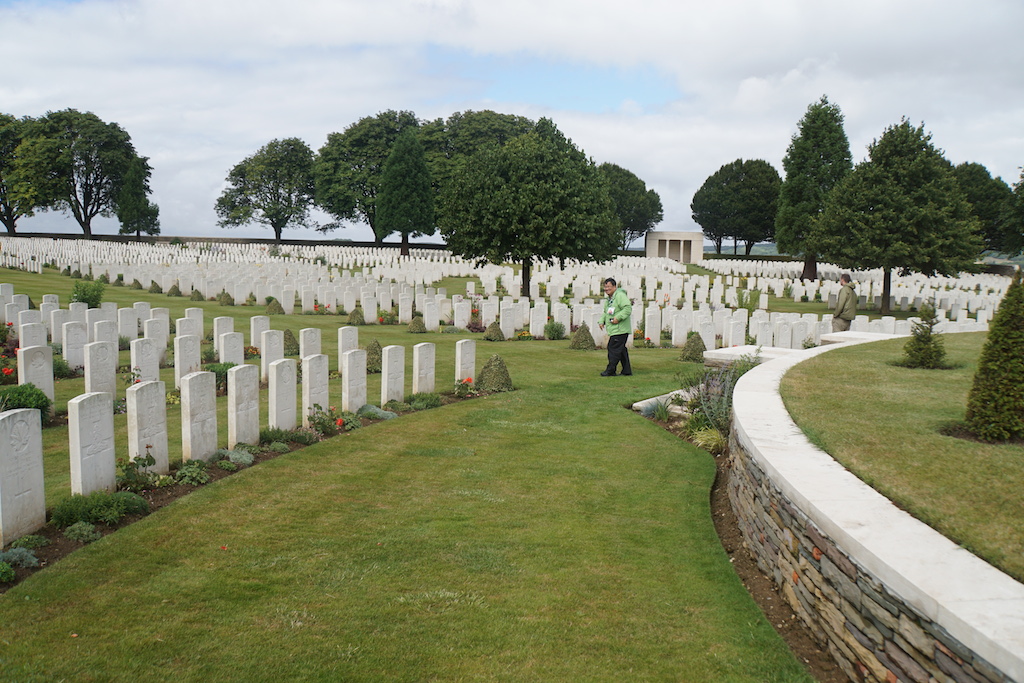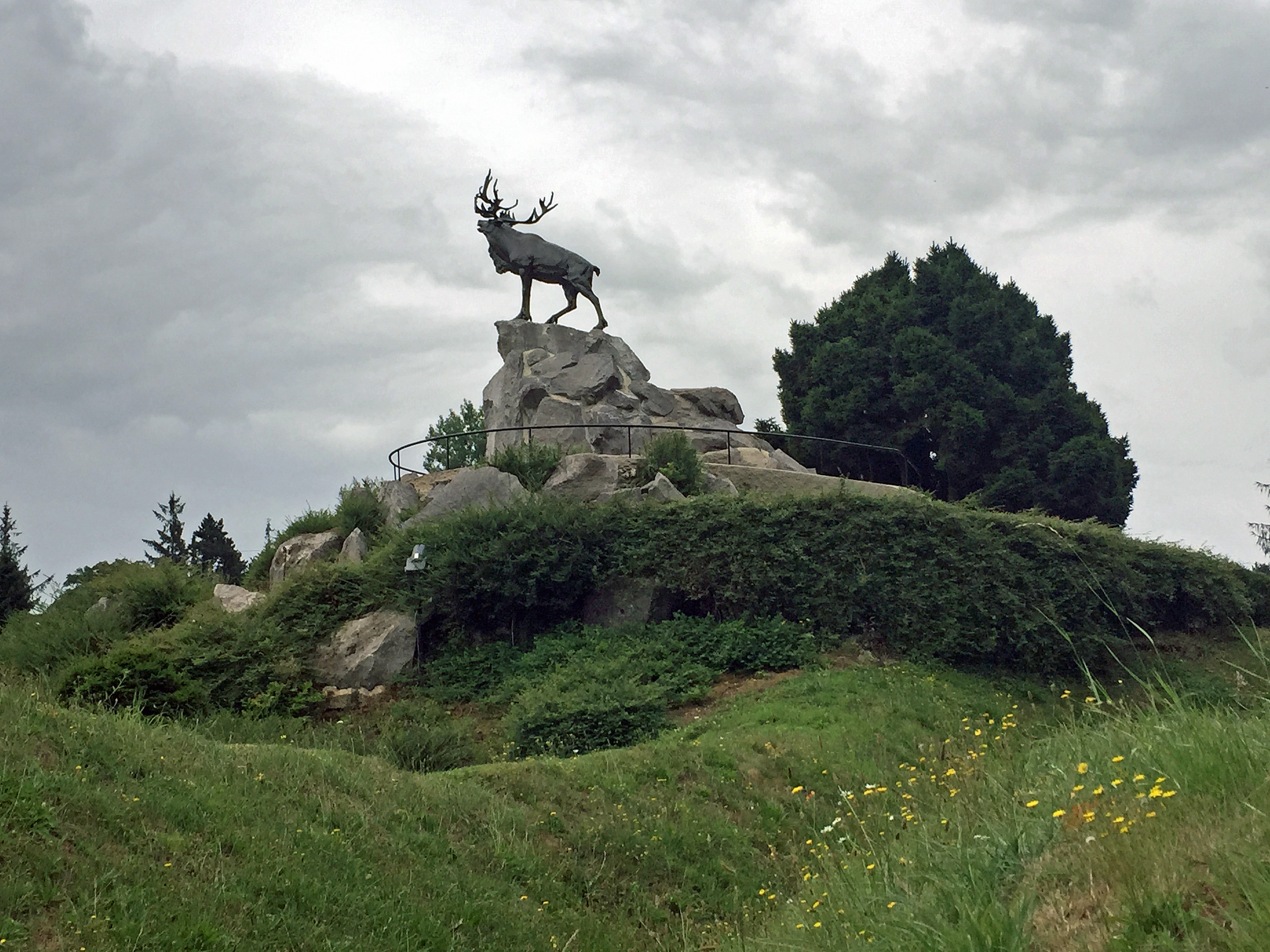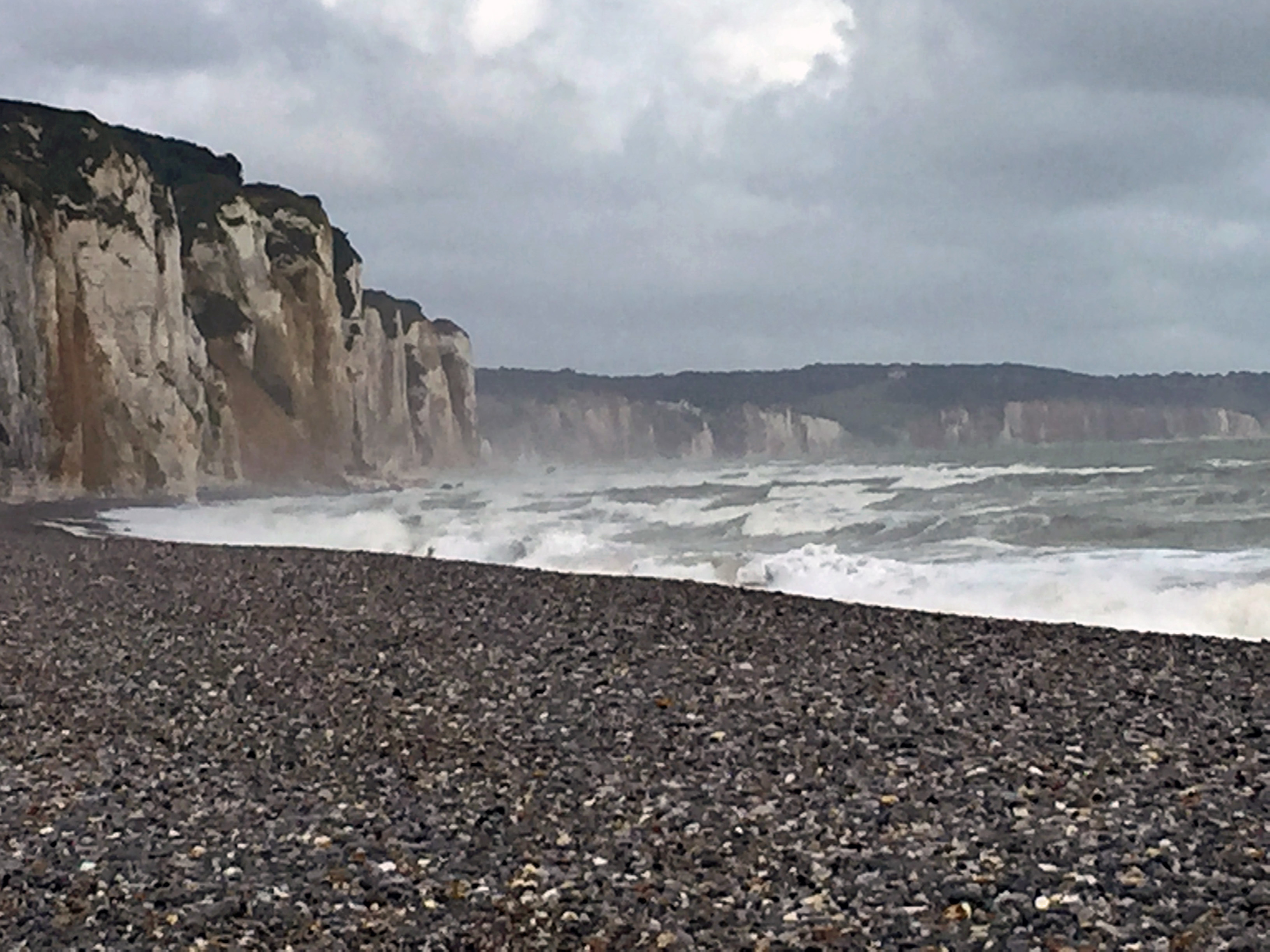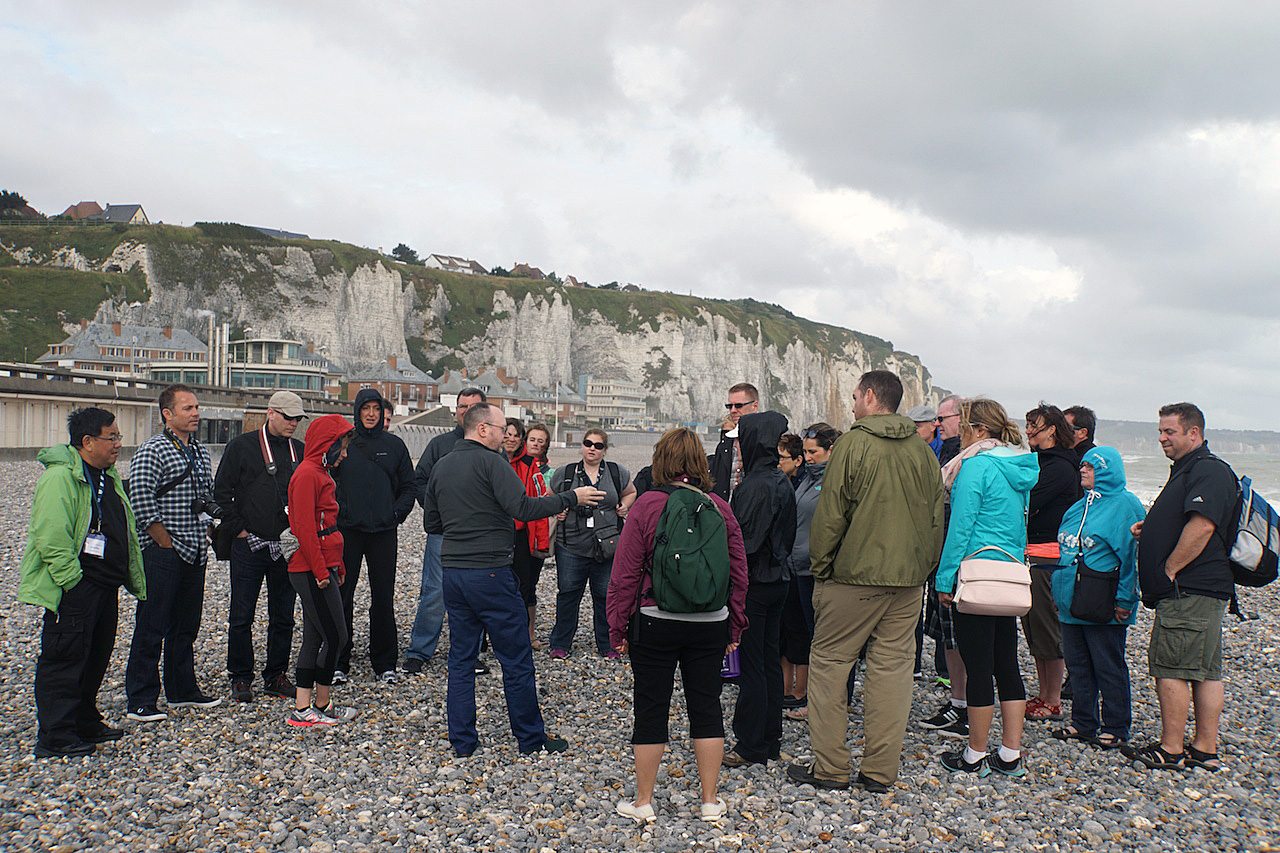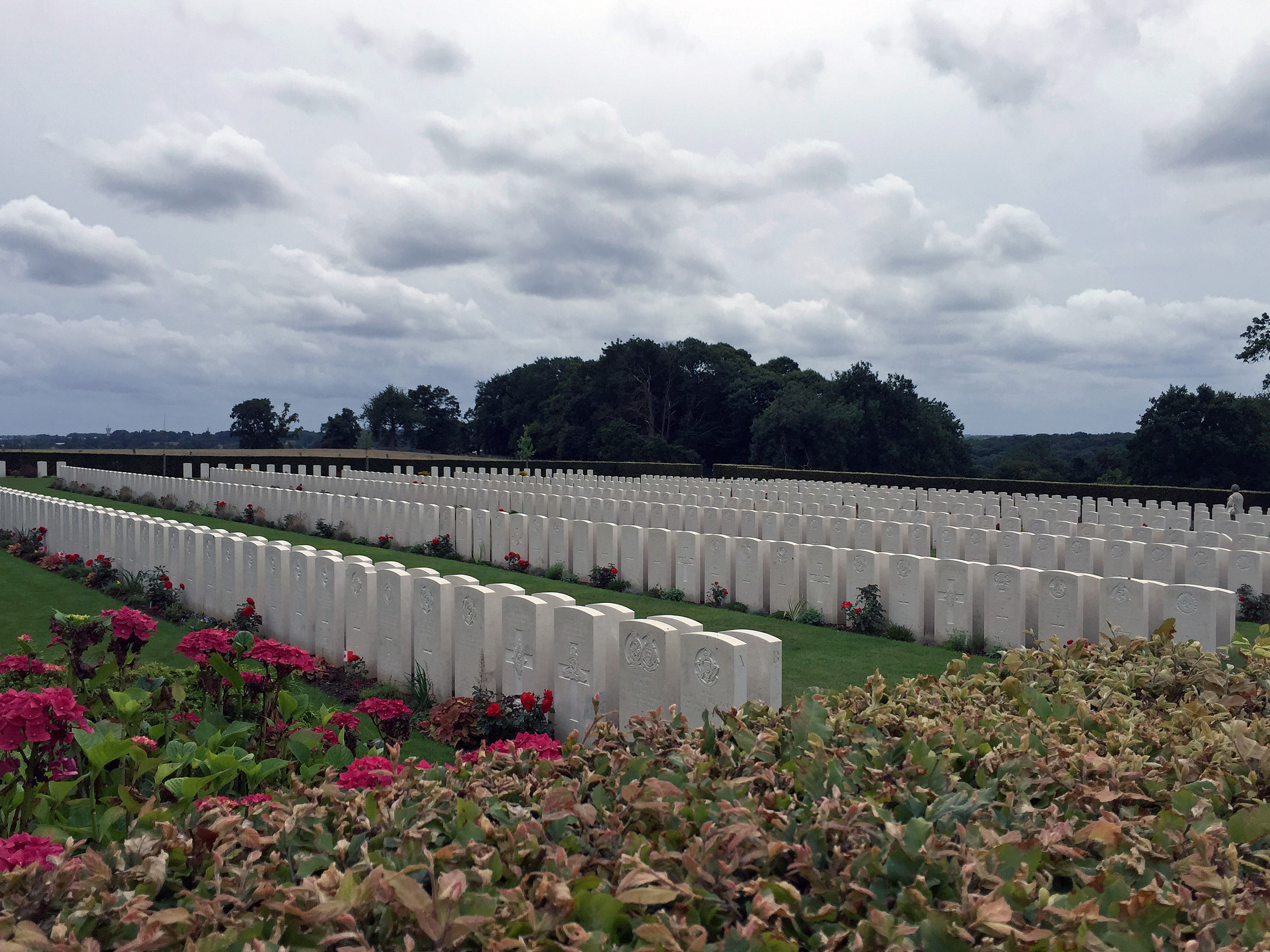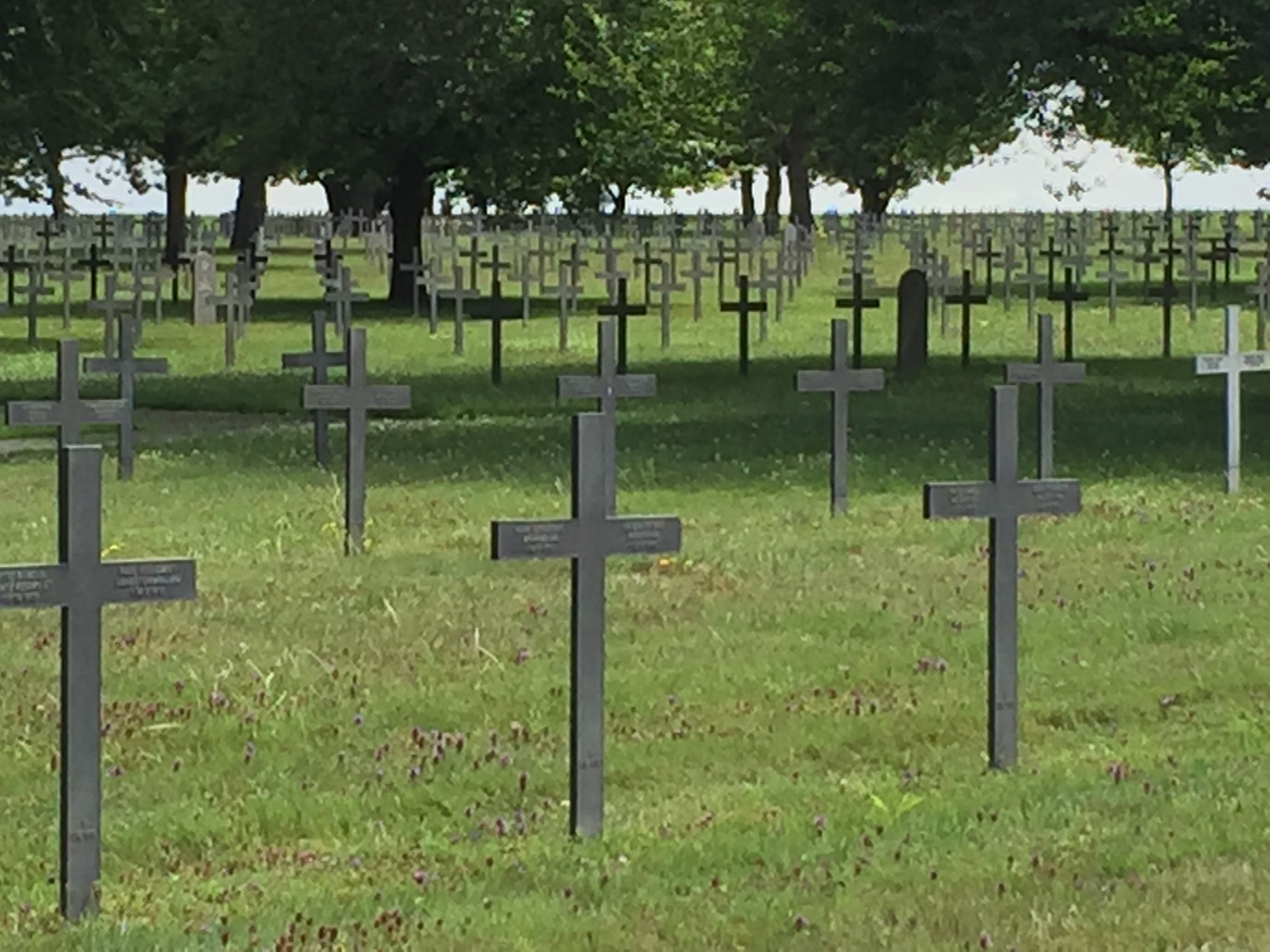Earlier this summer, along with twenty-five teachers across Canada, I participated in a 10-day Summer Institute and Battlefield Tour sponsored by the Juno Beach Centre in Normandy. The purpose of the trip was to visit some historically significant sites in that region of France and to meet with some locals who lived through D-Day and the Battle of Normandy.
Personally, I knew it would be a very enriching experience to actually walk the battlefields, share ideas with other teachers and learn more about the roles Canadians played during both World Wars. However, being a lifelong pacifist, I also knew it would be a challenging trip because, for me, military history makes me uncomfortable. Though not always the case, military history often comes across as glorification of wars. The winning side, who usually writes the narrative, creates a chronicle that portrays itself as the agent of the good and the defender of everything that is holy while war crimes are committed by the demonic and evil enemies, who also happen to be the losers.
As I travelled from Beaumont-Hamel to Vimy Ridge, from Dieppe to Juno Beach, from war cemetery to war cemetery, I began to look at military history through a new lens.
The following were two of the stops:
Beaumont-Hamel Newfoundland Memorial
“The very name of the Somme conjures up a picture of miserable wastes, mud and devastation. Surely no place would be more trying to patience, temper and comradeship” ~ Private Archie Surfleet.
On the very first day that we arrived in France, we made a stop here on a grey and drizzly afternoon. It was on this ground, on July 1st, 1916, the very first day of the Battle of the Somme, that the Newfoundland Regiment made an unsuccessful attack against the German army across No Man’s Land. Unsuccessful is really an understatement when one considers that only 68 of the 801 men from the Newfoundland Regiment were able to answer the roll call the following morning. Most of casualties — 255 dead, 386 wounded and 91 missing — occurred in the first 45 minutes of the battle.
At the time of WWI, Newfoundland had not joined Canada yet and it was a small outpost of the British Empire. Fighting as part of the British Army, the dead included 14 sets of brothers, including four lieutenants from the Ayre family of St. John’s. Maybe rather than Saving Private Ryan, a movie Saving Lieutenant Ayre should have been made.
A young man from PEI, I think Vincent was his name, was our guide at Beaumont-Hamel. He was giving us a briefing while we huddled beneath a majestic memorial — a bronze caribou that sits on top of a 15-meter mound. As Vincent was explaining how Newfoundland came to acquire and preserve the site, what the functions of the elaborate trench lines were, and the heroic but futile battle, I found myself drifting away. I was thinking about how in one fateful day almost 100 years ago, young men from a faraway land were given the order to go over the top; they would have seen bullets coming at them, heard explosions around them, and endured the horror of the bodies of their comrades collapsing next to them.
“Looking over there, that little shrub is the Danger Tree,” Vincent said, pointing to a spot about halfway into No Man’s Land. During the Newfoundland Regiment’s infantry assault, it was at that spot that the troops were told to gather. Sadly, it is a spot now that marks the highest concentration of casualties.
Sombrely, the group began to break and we each went our own way to take photos, to walk the trenches, and just to be by ourselves. For me, I glanced at the horizon a couple of kilometers away, imagining where the Germans machine guns were, and the artillery that would be farther away yet. What would soldiers be thinking at the very last moment if they were hit?
For days after the battle, countless families in Newfoundland would have received a dreaded telegram that began – “Deeply regret to inform you that …”
************************
The Dieppe Raid
“Those who seek for glory in war will not find it on the beaches of Dieppe.” ~ Robin Neillands.
On the third day of our trip, we checked into the Hotel Mercure in Dieppe and I was assigned a lovely seaview room. Before we went out for a group dinner, I decided a quick stroll on the beach would be good for my spirits, which had been getting heavier after another day of visiting cemeteries. The sky was dimming but there were families out walking, young people on bikes and a woman playing fetch with her German shepherd. I stood facing the sea and took in some salty air and felt blessed.
“It was a total disaster”, Chris Evans, our resident historian uttered these words almost on the identical spot I stood fourteen hours ago. By all accounts, Chris was correct. Almost two years before D-Day, for a number of military and political reasons, the Canadian army was sent to raid the port of Dieppe. The objectives were simple: surprise the enemy, gather some intelligence, destroy coastal defences and some buildings, demonstrate to the French, the Russians, and the Germans that a western front in Europe was possible. It was a raid rather than an invasion because the plan was to withdraw quickly after the mission was accomplished.
The date was August 19, 1942. With a combination of bad weather, poor planning, inadequate supports, and lack of communication during the raid, it was a bloody fiasco. Standing on the beach and taking in a panoramic view, it was hard not to wonder whose idea it was that the mission had any chance of success. The cherts (hard, dark little rocks) on the beach made all the supporting tanks immobile and sitting targets for the German artilleries. Not one single tank was able to make it off of the beach. The cliffs protecting the harbour on both ends would have been very difficult to scale even without bullets from machine guns raining down on you.
The operation started at 5:00 am and, by mid afternoon, it was all but over. According to the Veterans Affairs’ website: Of the 4,963 Canadians who embarked for the operation, only 2,210 returned to England, and many of these were wounded. There were 3,367 casualties, including 1,946 prisoners of war; 916 Canadians lost their lives. The prisoners of war would have been the soldiers who were left behind on the beach when the retreat order was given.
Just several kilometres south of Dieppe sits the Dieppe Canadian War Cemetery. The headstones in this cemetery have been placed back-to-back in double rows, typical of a German war cemetery because it was the Germans who first buried the allied soldiers here. What was really heart-wrenching for me was to see an entire row of headstones that had an almost identical etching: “19TH AUGUST 1942 AGE 24”. The only variation is the age.
Immediately next to the cemetery was a small plot of farmland where a few cows were grazing on the field. With that view and the fluffy clouds on the horizon, it was a juxtaposition of beauty and horror that I witnessed over and over on this battlefield tour. As our bus was pulling out, I spotted a taxi dropping off an older couple at the entrance to the cemetery. I wondered what story they could tell.
*********************
“The soldiers’ graves are the greatest preachers of peace” ~ Albert Schweitzer
When I reflect upon my experience in Normandy, the images of rows upon rows of tombstones will stay with me forever. I am always fascinated with cemeteries because there is no better place to remind us how precious life is. War cemeteries are different because the men there had their lives terminated prematurely. By right, they should have lived longer. In fact, it struck
me over and over how many tombstones bore the names of teenagers. We visit war cemeteries to pay our respect to the soldiers and to remember the horror of wars. We say ‘Lest We Forget’. So, what should we try not to forget, or conversely, what should we try to remember? I think we need to remember that each and every one of the dead has a story behind his life. It is their stories that we need to remember.

